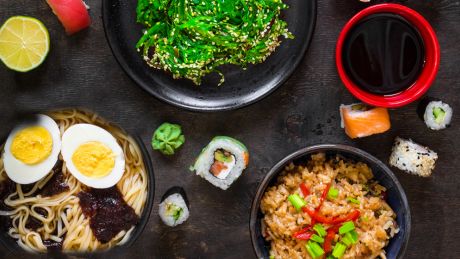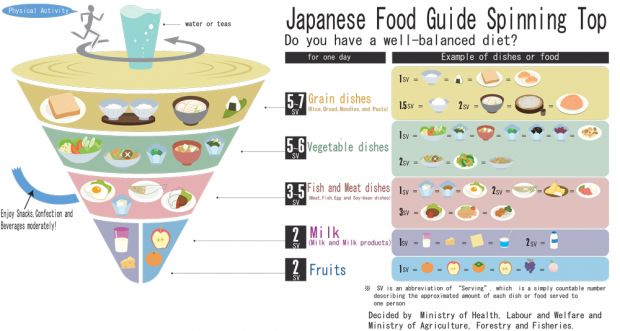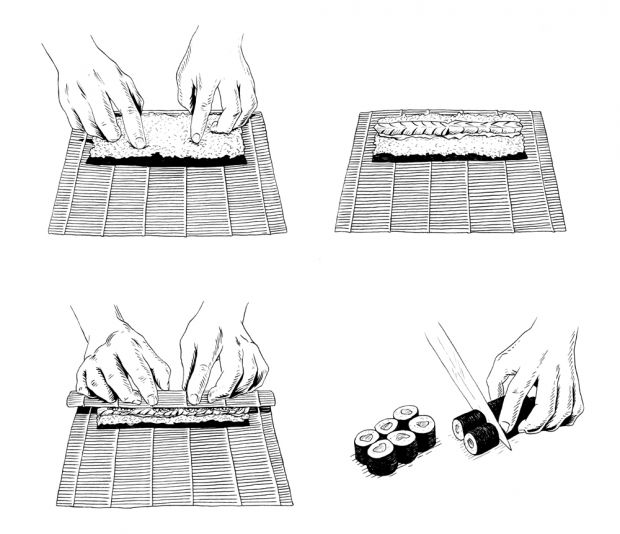Live Long and Prosper with the Japanese Diet
OK, we can’t promise you’ll prosper, but a new study suggests the Japanese diet is linked with longevity

When it comes to living a long time, the Japanese consistently know how to top life expectancy tables. They boast – at the time of going to press – four of the ten oldest folk on earth. The reasons behind this longevity are many and varied (or there’s a secret fountain of youth hidden outside Tokyo), but one factor consistently mentioned is a healthy diet.
A study published in the BMJ seems to back up that claim. The research tracked 79,594 adults for about 15 years and rated how closely they adhered to the official Japanese food guidelines with a score out of 70.
Those who scored highly, indicating that they followed the advice closely, had a 15% lower mortality rate, mainly due to a large reduction in deaths from heart disease. The study also found that the average score was 47 out of 70, showing Japanese people were good adherents to the guidelines. Given that a YouGov poll in 2015 found that two-thirds of people in Britain don’t eat their five-a-day, it’s clear Brits don’t heed government advice quite so closely.
RECOMMENDED: Heart Health Special
The Japanese Food Guide Spinning Top
If you’re keen to turn your diet Japanese in the wake of these findings, then the official Japanese Food Guide Spinning Top should be stapled to your kitchen wall.
As well as an inverted pyramid of food, the spinning top advises plenty of exercise, represented by a figure running to cause the rotation, and drinking water or tea. The guide also gives advice on what constitutes a serving for each category. For example, half a bowl of rice is one serving of grains, while a full plate of pasta counts as two. The guide doesn’t include alcohol and snacks; it says to enjoy them in moderation only.

- Grains – 5-7 servings of rice, bread, noodles and pasta
- Vegetables – 5-6 servings
- Fish, eggs, meat, soy beans – 3-5 servings
- Milk and milk products – 2 servings
- Fruit – 2 servings
Make Your Own Sushi
Sushi has become as much of a lunchtime staple as sandwiches, with UK sales of miniature seaweed parcels rising nearly 100% since 2012 and the industry now worth £40 million a year. But most shop-bought sushi is packed with added salt, sugar, flavourings and preservatives, none of which do your midsection any favours.
Sign up for workout ideas, training advice, reviews of the latest gear and more.
If you want it fresh, more nutritious and better-tasting, there’s no substitute for making your own – and it’s easier than you might think. All you need is a rolling mat – available from waitrose.com for £1.50 – and this straightforward maki recipe from chef Kiyozi Hayamizu (kikkoman.co.uk). For optimum results, enjoy it after a trip to the gym, when your body will be primed to use the fast-digesting carbs from the rice to build muscle. We guarantee you’ll never be tempted by those soggy supermarket sushi packs again.
Ingredients (serves one)
- 2 sheets of nori seaweed
- 150g sushi rice, cooked according to packaging instructions
- 75g salmon, sliced into batons
- Wasabi, to taste
- Soy sauce for dipping (optional)
Directions

- Place a nori sheet on the rolling mat with the smooth side 5mm away from the bottom edge. Spread half the sushi rice evenly on the nori, leaving a 1cm gap along the top edge uncovered.
- Using your fingers, press down to make a horizontal trench across the centre of the rice, then spread a little wasabi in it and lay half the salmon slices on top.
- Lift up the bottom edge of the nori with the mat and roll it as tightly as possible. When you reach the top edge, dab a thin line of water across the exposed area with your finger to help it stick, then complete the roll to form a cylinder.
- Remove the mat and cut the roll into six equal pieces with a sharp knife, then repeat the process with the remaining ingredients.

Nick Harris-Fry is a journalist who has been covering health and fitness since 2015. Nick is an avid runner, covering 70-110km a week, which gives him ample opportunity to test a wide range of running shoes and running gear. He is also the chief tester for fitness trackers and running watches, treadmills and exercise bikes, and workout headphones.
